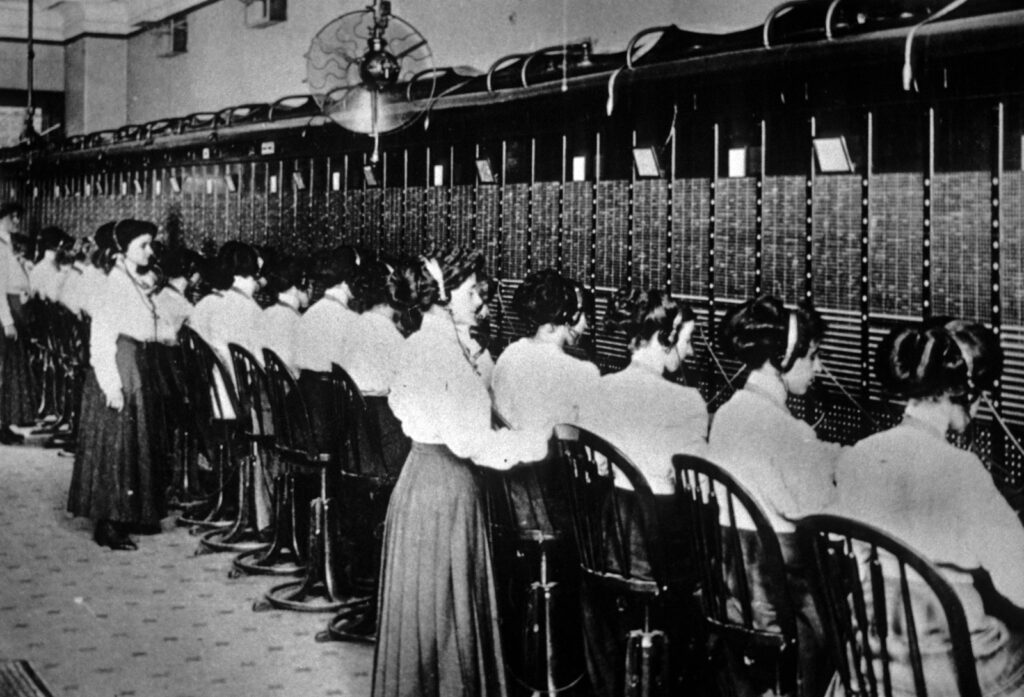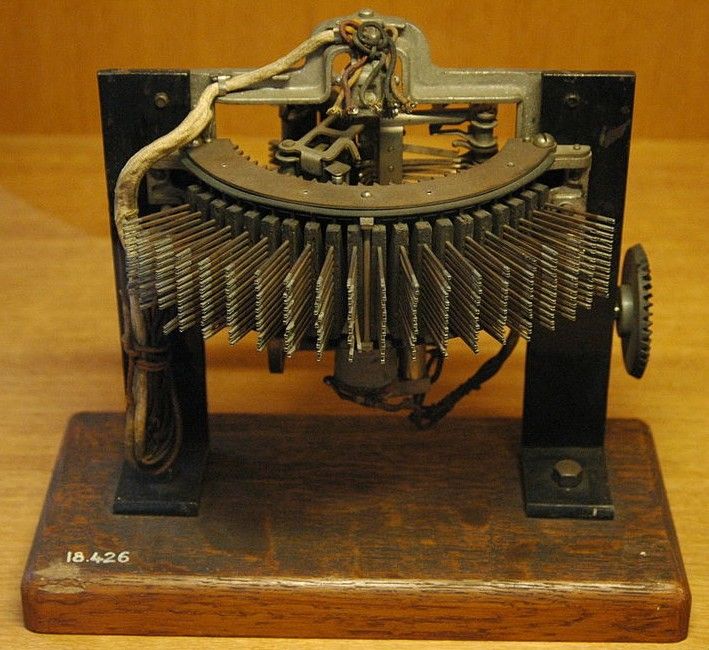From the earliest days of the telephone, it was observed that it was more practical to connect different telephone instruments by running wires from each instrument to a central switching point, or telephone exchange, than it was to run wires between all the instruments. In 1878 the first telephone exchange was installed in New Haven, Connecticut, permitting up to 21 customers to reach one another by means of a manually operated central switchboard. The manual switchboard was quickly extended from 21 lines to hundreds of lines. Each line was terminated on the switchboard in a socket (called a jack), and a number of short, flexible circuits (called cords) with a plug on both ends of each cord were also provided. Two lines could thus be interconnected by inserting the two ends of a cord in the appropriate jacks. (Read more)

Encyclopædia Britannica, Inc.
The idea of automatic switching appeared as early as 1879, and the first fully automatic switch to achieve commercial success was invented in 1889 by Almon B. Strowger, the owner of an undertaking business in Kansas City, Missouri.
Convinced the local telephone operator who was the wife of a competitor was diverting his calls, Strowger set out to create a means of bypassing the operator….and in 1891 he patented “the automatic telephone exchange”. A system that would become used throughout the world into the 1970s. (Read more)

To learn about electronic and digital switching, see next page.

